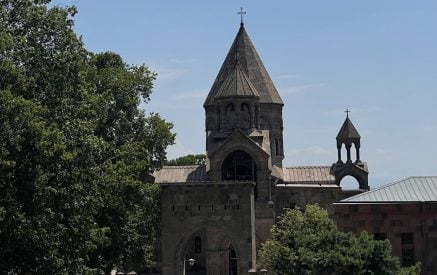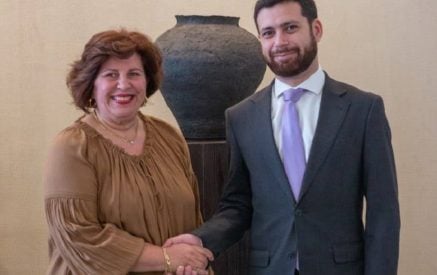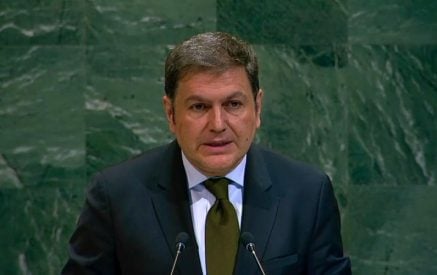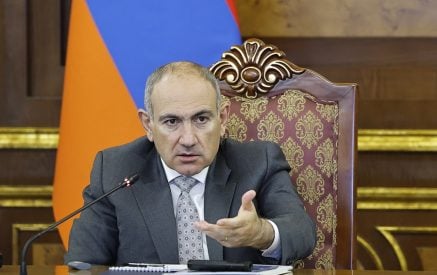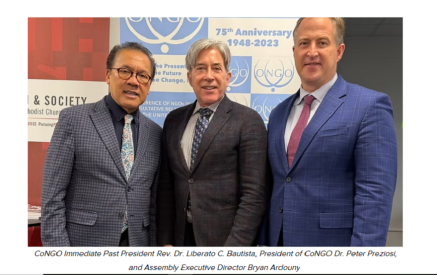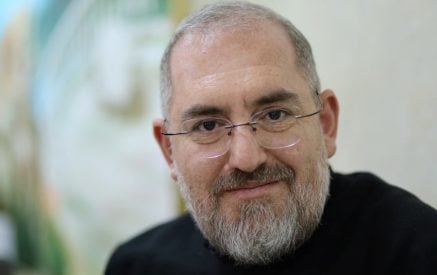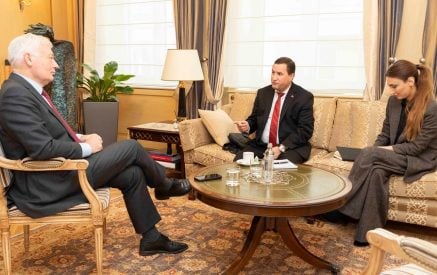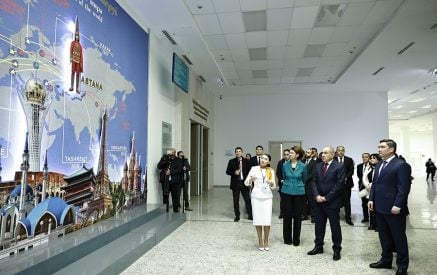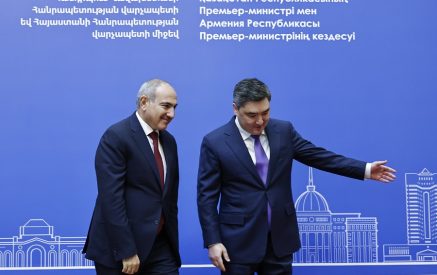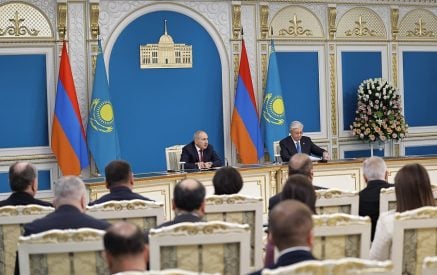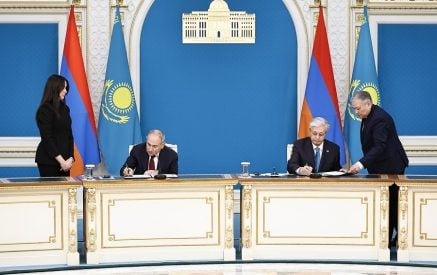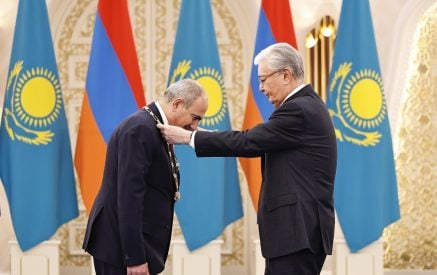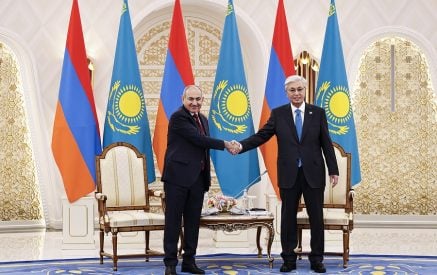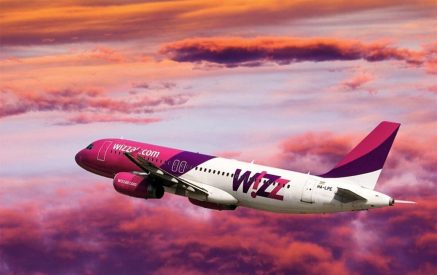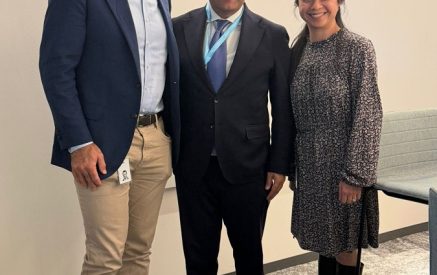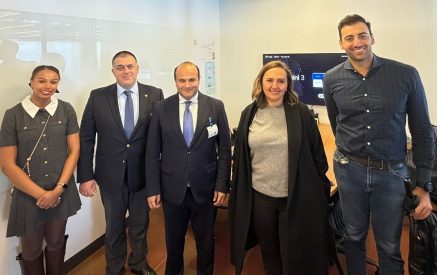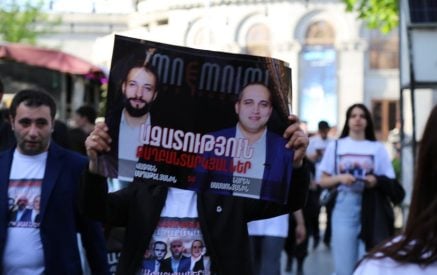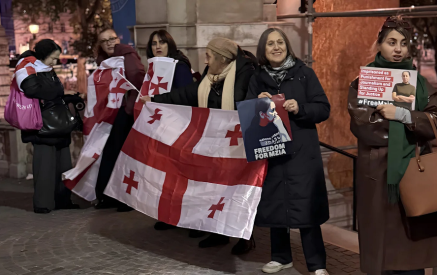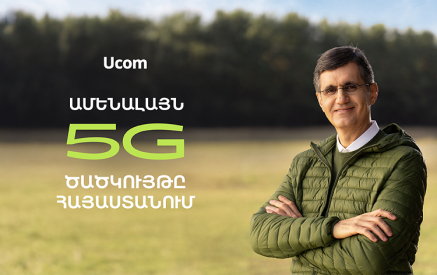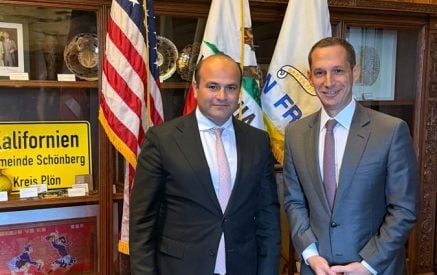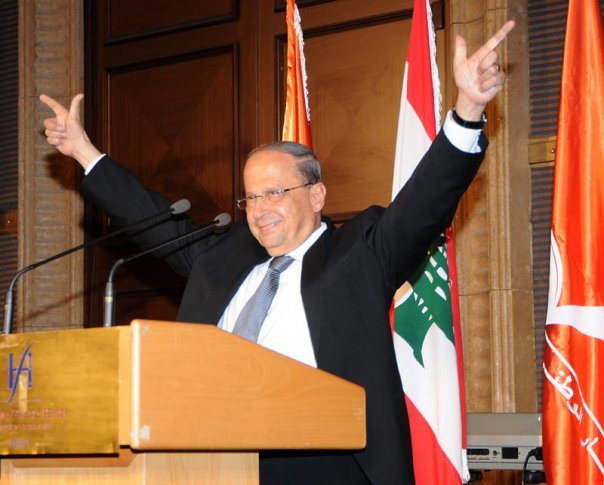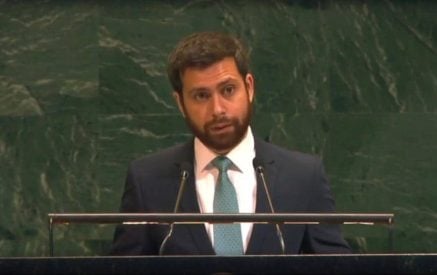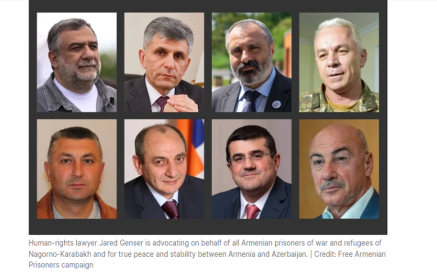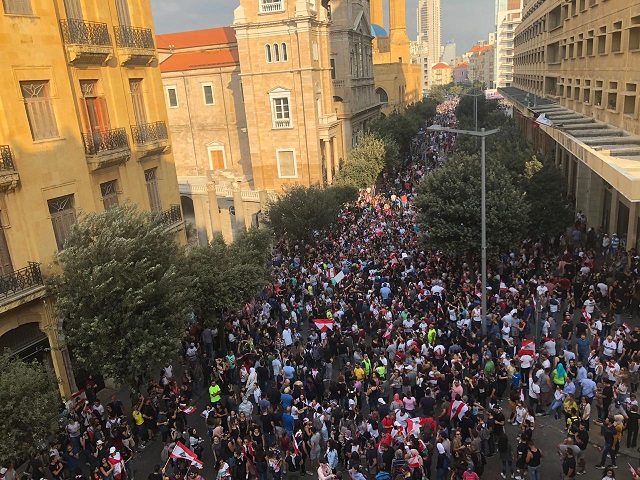The Armenian Weekly. Since independence in 1943, Lebanon has been governed by consent between the political elites. Yet power-sharing arrangements that regulated conflict between the Christian and Muslim communities have been broken several times, such as in 1958, 1975, 2005, 2006 and 2008. Lebanon has consistently experienced internal conflict and political instability when the government has historically failed to maintain neutrality in regional conflicts. Neutrality was a pillar of the National Pact of 1943 according to which Christians were to cease from seeking protection from the West and Muslims were to cease asking for help from Syria and the Arab world. Internally, consensus among the ruling sectarian elites, who shared the spoils of the system, was imperative for maintaining political stability, delivering public goods and achieving socio-economic development. Inter-elite consensus was important to avoid pushing the country over the precipice. Externally, the unstable regional environment in the Middle East, the Arab-Israeli conflict, the Israeli security threat and the divergent interests of Iran, Syria, Saudi Arabia and the United States (US) in Lebanon have all contributed to the paralysis of the power-sharing system. Apparently, regional dynamics cannot be separated from power-sharing in Lebanon. As Brendan O’Leary contends, “external stability is critical if it is to act as a framework for an internal settlement.” Indeed, Lebanon’s ability to survive the turbulent time in the Middle East, particularly after the Arab Spring from late 2010, has much to do with the regional balance between Syria and Iran on the one hand and Saudi Arabia and the US on the other. Among these regional crises, the Syrian insurgency that started in March 2011 and transformed into civil war has the greatest impact on Lebanon and has raised fears that it will trigger violence between the Shi’a and Sunni communities. The Shi’a-Sunni polarization in Lebanon could be interpreted within the context of Iranian-Saudi rivalry and regional power struggle following the assassination of the former Prime Minister Rafiq Harriri, an influential Sunni political figure, and the Syrian withdrawal from Lebanon in 2005. Further, Michael Kerr convincingly states that “what lies ahead for Lebanon remains inextricably linked to the US-Iranian conflict and the Arab Spring.”
The Lebanese political system is characterized by clientelism, nepotism, favoritism, sectarianism, confessionalism, and most importantly, crony capitalism in a deep state typified by erosion of the rule of law. Most of the political elites, who shared the spoils of the system, have rendered services to their constituencies in return for political loyalty and votes during parliamentary elections. Corruption has been deeply rooted in the system with accountability upheld in rare situations. Attempts to reform the system and provide public employment on an eligibility basis have been blocked. Personal and sectarian interests have superseded the national interest, and loyalty among most of the Lebanese has been to their sectarian leaders rather than the state. For these reasons, state-building and nation-building failed. Currently, it is no exaggeration to label Lebanon as a failing state with no ability to provide public goods, including electricity, clear water, public safety, infrastructure and economic development.
In the post-2005 period, the religious and sectarian differences in Lebanon’s deeply divided society have become enduring and threatening. Whilst the culture of power-sharing has proven resilient in the country, consociational practices are no guarantee of long-term political and economic stability. As a matter of fact, the quasi-democratic system of the Lebanese consociation has led to the paralysis and stagnation of the entire political system due to the excessive negotiation, bargaining and compromise that have been requirements for decision making at the executive branch of government. After the July-August 2006 Hezbollah-Israel war, existing internal political divisions intensified over specific national issues including the presidency, the cabinet, the role of the state, foreign policy, and most importantly, the weapons of Hezbollah that posed a security threat to many Lebanese. Indeed, in 2008, when Hezbollah (which represents the majority of the Shi’a) felt threatened by the government’s decision to dismantle its telecommunication network, it used its weapons against the Sunni community. The internal conflict ended with the Doha Agreement in 2008 after intensive Qatari mediation with Arab support. Hezbollah’s action reflected the weakness of the Lebanese state and its lack of monopoly over the use of legitimate violence. Many Lebanese assumed that a Hezbollah-designed Lebanon would not bring equity, sustainable peace or prosperity because its political project lacked consensus. It is important to note that Hezbollah has been a proxy of Iran and a party to the axis of resistance (Iran-Syria-Hezbollah) against Israel.
The commitment of Hezbollah to the Syrian and Iranian agenda and the Sunni community’s commitment to the Syrian opposition and Saudi Arabia made power-sharing and elite accommodation problematic. Hezbollah along with some radical groups from the Sunni community have been involved in the Syrian conflict. The ongoing violence in Syria caused a cascading series of crises in Lebanon, including the spillover of violence, more involvement of Lebanese factions in the civil war and an unprecedented flow of refugees that cost the Lebanese Treasury $1.1 billion over the course of two years (2011-2012) due to the essential provision of education, healthcare, electricity, food and other necessities. The number of Syrian refugees in Lebanon exceeded one million seven hundred thousand, something that was beyond the capacity of the state to cope with. In response to the dire situation, national-level decision making with regard to regulating the entry of Syrian refugees to Lebanon was missing because of political bickering between the sectarian Lebanese parties. With limited financial aid from Western countries to meet the needs of refugees Lebanon would plunge deeper into an economic crisis. According to Yezid Sayegh, “the more conflict there is in Syria, the more security threat there is in Lebanon. Anything that reduces armed conflict in Syria is going to ease the tension in Lebanon and of course reduce the sense of anxiety.” Yet, the security and political deadlock in Lebanon would continue throughout any protracted negotiation process to end the Syrian conflict.
Read also
In 2013, the Christian-Muslim coexistence formula and the consociational system came under increasing criticism from a wide spectrum of Lebanese citizens, recalling Maronite Patriarch Bechara Rai’s repeated calls for a new social contract. On November 18, 2013, the leader of the Free Patriotic Movement (FPM) Michel Aoun launched the most blistering attack to date on the Tai’f Accord, which ended the Lebanese Civil War in 1989, describing it as “an Accord of fraud to consolidate foreign grip over Lebanon.” Until serious efforts were made by Lebanon’s rival factions to formulate policies that tackled questions of sovereignty and reflected national interests, it seemed inevitable that there would be further deadly repercussions of the crisis in Syria. Lebanon had to present a united front on that crisis and all parties had to commit to non-intervention.
When Michel Suleiman’s term ended on May 25, 2014, Lebanon faced a presidential vacuum. The failure to elect a new President indicated deeper dysfunction in Lebanon’s political system and economy. At that point, Lebanon was ‘something of a mirror of the Middle East. It is entrenched at the heart of the biggest proxy conflict in the region, the war in Syria, and its internal dynamics accurately capture the broader major tensions and active conflicts.’ It was difficult to separate the conditions in Lebanon from the conflicts that were defining the Middle East, especially the civil war in Syria and the widespread Saudi-Iranian proxy confrontation in Lebanon itself, Iraq and Yemen. The political elites were still dominated by non-Lebanese players, so there was little or no chance of the country’s politicians electing a president.
Lebanon’s political class was held responsible for the deterioration in the country’s socio-economic situation because of the ‘deliberate paralysis of state institutions.’ Leading private sector figures and union members convened at BIEL on June 25, 2015 to voice their frustration over the presidential vacuum and government inaction. Business leaders, unions and civil society groups all called on the politicians to look beyond their narrow sectional interests and prioritize the interests of the country. Dubbed the “June 25 Declaration – A decision against Suicide,” the conference sounded alarm bells about the downward spiraling of the economy and the grave socio-economic consequences of perpetuating the political crisis. The unemployment level now stood at 35-percent and the economy was burdened by a public debt of more than $66 billion. Moreover, ongoing security concerns had led the Gulf States to instruct their citizens not to travel to Lebanon, a decision that was decimating the tourist industry. The head of Beirut’s Chamber of Commerce, Mohammad Choucair, warned that Lebanon might “lose $1.1 billion in grants and soft loans” if parliament failed to convene and pass some laws. However, with no Western initiative on the horizon to resolve Lebanon’s political paralysis, the country seemed unlikely to solve its own problems.
On October 30, 2016, the Lebanese parliament elected the FPM leader Aoun as President, ending a 29-month presidential vacuum in a political deal that secured victory for Hezbollah and its internal allies on the one hand and its external allies of Iran and Syria on the other. According to an Iranian official, the choice of Aoun was “a great triumph for the Islamic Resistance movement [against Israel] in Lebanon and for Iran’s allies and friends.” With regard to the US, the State Department described Aoun’s election as “a moment of opportunity” and said it looked to all parties to uphold Lebanon’s international obligations. Political postures aside, according to a 2016 World Bank report, patronage politics cost Lebanon an estimated nine percent of GDP annually, in part because the country rarely punished corruption among the political elites. Meanwhile, inequality increased, ‘with the richest one percent of Lebanese earning 25 percent of Lebanon’s national income.’ After eight months of bickering, the leader of the Future Movement (FM) Saad Hariri formed a 30-member government. The ruling alliance was between the FM and the FPM and its Shi’a allies Hezbollah and Amal Movement. Prime Minister Hariri called for the implementation of a harsh austerity budget for 2019. It is important to note that for decades the parliament did not hold the government accountable for spending money without having a budget. Meanwhile, in July 2019 the US imposed sanctions on Hezbollah lawmakers, and in September interchangeable currency transactions on ATMs stopped with no official statement from the Association of Banks.
On October 17, 2019 reports of a WhatsApp tax of $6 a month, or 20 cents per day, and austerity measures in the proposed 2020 budget ignited nationwide protests. Lebanon ‘the third most indebted country in the world,’ already has some of the most expensive mobile services in the Middle East. Lebanon witnessed nationwide protests against the political elites that have ruled the country through corruption and sectarianism in pursuit of their own interests. Protected by the consociational power-sharing system, these politicians have devised ways to keep each other in power and silence their constituencies under the pretext of safeguarding national peace and preventing sectarian violence. Still, these politicians had their own media and intricate web of clientelism, shared the spoils of the system and were financed by their foreign patrons. The popular uprising that began on the seventeenth of October was reminiscent of the March 2005 Cedar Revolution after the assassination of Rafiq Hariri. But this time protesters crossed sectarian divides and demonstrated unity and social cohesion, because they shared the same grievances of poverty, unemployment, salary stagnation, the high cost of living and lack of public services. In the last 15 to 20 years, these problems had prompted a significant proportion of the country’s well-educated youth to emigrate. The demonstrators chanted ‘the people want the downfall of the political system,’ ‘regime change,’ ‘all of them must step down,’ ‘power to the people,’ ‘down with the rule of the Central Bank,’ ‘Revolution,’ ‘civil state without a sectarian system.’ Although the demonstrators formed ad hoc committees, they were disorganized and they lacked uniform voice and demands. They were scattered, exhibiting no unified leadership or ideology, and did not propose a feasible alternative to the current government. It is important to note that the ‘political parties reacted swiftly in an attempt to harness the protests for their benefit.’ Therefore, with no horizon for the popular uprising to bear fruit the politicians aimed at sowing discord between the demonstrators to stop their socio-political movement.
Protests continued nationwide calling for the fall of the regime. During a press conference on October 18, Hariri blamed his government partners for blocking sweeping reforms and announced a 72-hour deadline for the government to prepare a long overdue economic reform plan. While Hezbollah’s leader Hassan Nasrallah sympathized with the protesters, he echoed his ally—FPM leader and Foreign Minister Jibran Bassil—in warning that the government’s resignation would create a power vacuum. Meanwhile, the Lebanese Forces (LF) announced the resignation of its four ministers, marking the first tangible success of the protesters’ demands. Hezbollah feared that radical changes in Lebanon, including reform, would be used to undermine its role in the country and region. Hezbollah ‘has long been a target of US-led attempts to isolate it, a drive that the Trump administration intensified in 2019 in tandem with its “maximum pressure” campaign against the party’s main external sponsor, Iran.’ It should be noted that Hezbollah is designated by the US as a terrorist organization.
On October 21, Hariri announced a list of 17 reforms approved by the government that proposed to cut the deficit and expedite administrative reforms without increasing taxes on the people. After a few days Aoun addressed the Lebanese for the first time since the beginning of the protests. He supported the idea that Hariri’s economic reform plan would save Lebanon, vowed to work toward a civil state and promised to implement a unified personal status law. However, the Lebanese had lost trust in their rulers and were tired of undelivered promises for decades. On October 29, Hariri announced that he had reached a dead end and tendered his resignation, arguing that Lebanon needed a ‘shock’ to be saved. Clearly, Hariri’s resignation ‘was largely motivated by his failure to gain support, in particular from Hezbollah, for a cabinet reshuffle that could have given him a freer hand to govern.’ Hariri’s resignation put an end to the presidential deal that brought Aoun to the presidency. What followed were months of wrangling over a new government formation while the ‘Lebanese economy went into a tailspin proved the political elite’s indifference to ordinary citizen’s plight.’ During the second half of October 2019 the closure of public and private institutions and banks added uncertainty and loss of trust. Still, in the case of the banks, warnings of impending liquidity and persistent closures further undermined confidence, and government officials and opposition activists warned of a financial meltdown.
After mandatory parliamentary consultations, on 19 December 2019, Aoun named Hassan Diab, engineering professor at the American University of Beirut, to form a technocrat government, thus giving in to popular demands to form a non-political, specialists’ government. Yet, in the 20-member cabinet that was assembled on January 21, most of the ministers belonged to the Aoun-Hezbollah-Amal Movement alliance. The mid-March shutdown of the already struggling economy in response to the COVID-19 emergency turned the economic disaster into catastrophe for most of the Lebanese. The crisis long preceded the coronavirus pandemic. The fiscal upheaval that the COVID-19 pandemic magnified ‘pushed the Lebanese economy into a downward spiral toward recession, soaring inflation, mass unemployment, shortages of imported goods and state insolvency.’ The economic pressure generated more unrest in the streets and threatened complete economic collapse. On March 23, the finance ministry announced that it would suspend payments on all outstanding Eurobonds in foreign currency, a total of $31 billion. In April the government defaulted on its foreign and local debt of approximately $90 billion. Domestically, depositors in Lebanese banks, where 70 percent of deposits were in dollars, have been denied their savings. Bank withdrawal or credit card payments were priced at the official rate of 1,507 Lebanese pounds to the dollar, which was worth an average of 7,400 to 8,000 in the parallel market. Billions were transferred abroad by the political and business elite before the crisis took hold. Top civil servant in Lebanon’s finance ministry Alain Bifani, who resigned in June 2020, announced in a press conference that the political and business elite transferred $5.5 to $6 billion dollars at a time when they prevented depositors from withdrawing $100 dollars from their accounts. Bifani’s resignation indicated that the system was unable to introduce structural reform.
On April 30, 2020 the government approved a reform plan laying out a roadmap for pulling the country out of the crisis. In May Lebanon initiated remote talks with the International Monetary Fund (IMF) for financial support and debt restructuring. Even Hezbollah, which has become a state within the state, seemed to have realized only the IMF ‘could unlock the finance Lebanon needs to survive and rebuild.’ The government’s 53-page blueprint warned: “by failing to tackle the core imbalances of the Lebanese economy, the scenario of no or very limited external support [without an IMF program] would considerably increase the risks of complete collapse.” According to US diplomat Jeffrey Feltman, the government’s plan “is more ambitious than its never-implemented predecessors. It calls for an IMF program that previous governments had ruled out, fearful that IMF intrusiveness would reveal the true extent of Lebanon’s underlying rot.” Sadly, Lebanon did not utilize previous support packages such as Paris 1 and Paris 2 that were designed to introduce structural reform and strengthen state institutions to achieve economic growth and fight corruption. Feltman rightly argued “traditional justification for external assistance no longer works” because this government relies on Hezbollah and its allies for its parliamentary support. Thus, ‘the challenge for Diab will be to persuade that’ the government’s rescue economic plan ‘does not solidify Hezbollah’s dominance in an increasingly fractured and dysfunctional, if not non-existent, state.’
What remains unclear is the extent to which Diab’s government that is supported by Hezbollah and its allies would accept the conditions that may come with an IMF financial package. Internal policy failures aside, part of Lebanon’s socio-economic and political crisis was the result of Hezbollah’s anti-US and anti-Gulf states posture, particularly against Saudi Arabia, which took Lebanon to the abyss. In a June 2020 interview with Lebanese media, the US Assistant Secretary of State for Near East Affairs David Schenker accused Hezbollah of attempting to “acquire the Lebanese financial system.” Schenker added that Lebanon needed to “make difficult decisions that change the way the country is run,” accentuating further that Hezbollah “is not an organization that seeks reform, but rather one that lives on corruption.” Responding to allegations made by Hezbollah’s leader, Nasrallah, that the US was preventing the transfer of dollars to the Lebanese economy, Schenker said such accusations were “woven from imagination” and that instead the problem was “corruption, the smuggling of dollars to Syria and tax evasion by Hezbollah.”
Since October 2019 Lebanon has been facing the gradual disintegration of public and private institutions that threatens to create extended instability punctuated by violent episodic outbursts. Currency devaluation continues to wipe out public and private sector salaries that could lead to complete institutional and state collapse. As of July 1, 2010, the number of unemployed in Lebanon exceeded half a million, and poverty has spread into ever larger parts of society since then. New protests could break out that the security forces may no longer be able to control. After 2010, the consociational power-sharing system did not keep Lebanon immune from the repercussions of the conflicts in the Middle East because the Lebanese parties demonstrated loyalty to their external patrons by choosing sides. Certainly, for the last 30 years the political parties, particularly Hezbollah, have been responsible for the mess. Lebanon is in dire need of foreign assistance, but relying on donors and external assistance may be wishful thinking if the government does not initiate drastic structural reform including reshaping the banking sector, restructuring the foreign debt, fighting corruption, ending smuggling and illegal economic activities, applying the rule of law, reforming the electricity sector that has cost Lebanon $2 billion annually, and most importantly, loosening Hezbollah’s grip over Lebanon.


